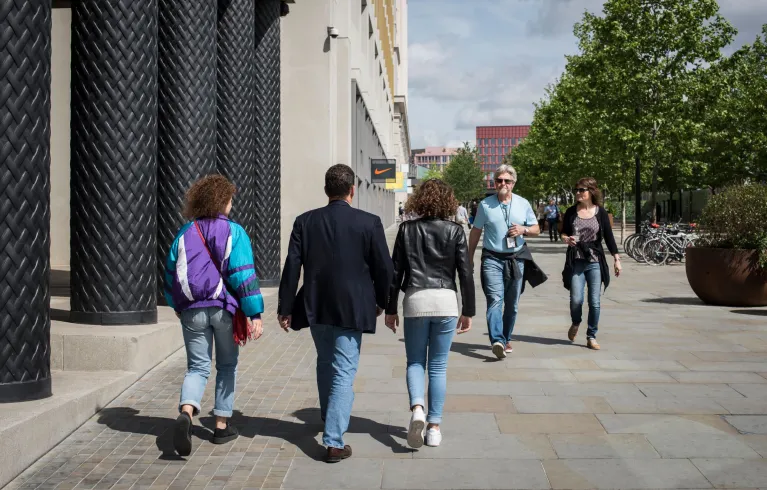
Key information
Publication type: Current investigation
Publication status: Adopted
Publication date:
Contents
Introduction
The Transport Committee will meet to ask how walking and wheeling can be made more attractive and accessible in London.
Meeting aims and objectives (terms of reference)
TfL’s Walking Action Plan sets out a vision for London to be the world’s most walkable city, which it defines as “a city where walking is the most obvious, enjoyable and attractive means of travel for all short trips.”
The Walking Action Plan set a target to increase the number of walking trips by more than 1 million per day by 2024, from 6.4 million to 7.5 million. TfL’s report Travel in London 2024 reported that in 2023 the estimated number of daily walking trips was 6.7 million.
This meeting will examine whether the right actions are being taken to make walking and wheeling attractive and accessible, including considering the impact street clutter, pavement quality and facilities are having on pedestrians and walkability across London.
Key issues
- Street clutter was identified as a significant problem in central London in Centre for London’s 2023 report Reducing Street Clutter in Central London. This concluded that reducing street clutter will be important if London wants world-class pavements and made four recommendations to achieve this. The report highlighted issues including: many pavements lacking adequate space (2 metres) needed to be considered walkable for all; A boards were the most common form of street clutter, with e-bikes, rubbish bags and bollards also common; and one of the biggest barriers to tackling street clutter is a lack of clarity on who was responsible.
- Create Streets March 2024 report Move Free concluded that “Undoubtedly the most successful (and sustainable) urban places make it easy, safe, joyful and affordable to move around by train or tram, bus or bicycle, on foot as well as on wheels.” In its report published in March 2025 Rubbish Refuse Create Streets looked at the impact of commercial waste on Britain’s high streets, identifying an issue with “unsightly rubbish bags tipped on the pavement competing for space with pedestrians.” The report set out nine short, medium and long term recommendations to address this issue.
- In 2022 Sustrans, with ARUP and Living Streets, published a guide to making walking and wheeling accessible, inclusive and desirable. The report Walking for Everyone: Making walking and wheeling more inclusive identified the need for walking environments to have places for people to stop and rest at frequent intervals, including seating, shelter and toilets. It found that a lack of these facilities can impact Disabled people, older people and people who are pregnant or breastfeeding.
- TfL is responsible for the design, maintenance and management of 5 per cent of London’s roads with Boroughs responsible for the remaining 95 per cent. The Mayor has stated that TfL supports boroughs to apply inclusive design principles to their streets in line with the Healthy Streets Approach. The Mayor also stated that TfL conducts quarterly Customer Experience High Street Walks on the Transport for London Road Network to address the high street for items and defects. In November 2023, the Mayor stated that TfL had removed circa 3000 items of street clutter in the last 5 years.
- TfL’s Walking Action Plan reports that 14 per cent of Londoners say London is not pedestrian friendly and that 66 per cent of Londoners say they would walk more if routes were improved to give greater priority to people walking. It also states that “crowded and obstructed streets, and pavements not being wide enough are among the most frequent and annoying ‘pain points’ cited by people walking.” TfL’s Walking Action Plan sets out actions to address these barriers to walking including building and managing streets for people walking, planning and designing for walking and leading a culture change.
Key questions
- How do street clutter, pavement quality and facilities affect pedestrians’ safety, comfort, and willingness to walk in London?
- What are TfL and the boroughs doing to reduce street clutter and improve pavement conditions in London?
- How effective have measures to improve walkability been, and what challenges remain in managing street clutter across London?
- How have issues with street clutter, pavement quality and facilities contributed to the lack of progress towards TfL’s target to increase the number of walking trips by more than 1 million per day by 2024?
- What improvements could be made to walking and wheeling routes to make them more attractive and accessible?
Written evidence
As part of the investigation, the Chair of the Transport Committee wrote to a selection of organisations, asking for written evidence to inform the Committee’s meeting on the walkability of London’s pavements.